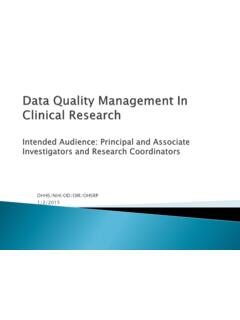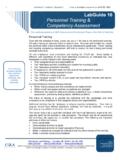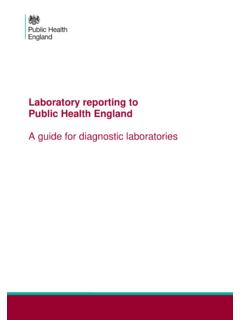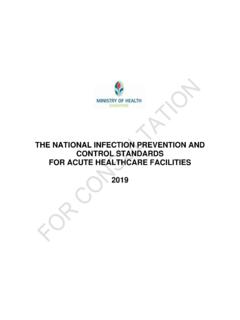Transcription of A MANUAL OF GOOD PRACTICES IN FOOD QUALITY …
1 AAA MMMAAANNNUUUAAALLL OOOFFF GGGOOOOOODDD PPPRRRAAACCCTTTIIICCCEEESSS IIINNN FFFOOOOOODDD QQQUUUAAALLLIIITTTYYY MMMAAANNNAAAGGGEEEMMMEEENNNTTT CCCooonnnccceeeppptttsss aaannnddd PPPrrraaaccctttiiicccaaalll AAApppppprrroooaaaccchhheeesss iiinnn AAAgggrrriiifffooooooddd SSSeeeccctttooorrrsss ! " # $ %&'%(% % )*+&,-. / "0 1 0 " 2 0 22 3 0/ " 4 1 5 " 0 6 22 / / " 5 0 1 2 5 / 2 " " 2 3 ! 4 3 " 0/ 2 5 / 0 6 4 5 26 2 6 5 " 2 /5 5 2 6 6 2 6 5 !6 ! 1 6 1 0 2 " 0/ 3 3 3 0 6 % 2 6 02 78 Dpwfs! !boe!Uzqftfu!Qsjoufe!boe!cpvoe!jo!Cfmhjv n!cz!!Wbsjbuzq!'!Dpqz!Tfswjdf-! !Csvhhf ! " CONTRIBUTORS LIST University of Agriculture and Veterinary Medicine Cluj-Napoca, ROMANIA Prof. Dr. Carmen Socaciu Eng. Camelia Echim Eng. Sonia Nechifor University of La Rioja, SPAIN Dr.
2 E. Gonz lez-Fandos Eng. Barrio University of Leon, SPAIN Dr. E. Gonz lez-Fandos Dr. Garc a Fern ndez Dr. V zquez Burguete University of Szeged College of Agriculture, HUNGARY Prof. Judit Peter Szucs Prof. Janos Palotas University Szent Istavan, HUNGARY Prof. Gy rgy F leky Prof. Mikl s M zes TREBAG, HUNGARY Zs fia Bulla Peter Kovesd Tallinn University, ESTONIA Raivo Vokk EMonument, BELGIUM Iain Muse Gerdi Osaer ! " ! " Overview of topics to be I 1. Revealing the main problems of the current QUALITY system focusing on the food industry 2. Specifying the possible ways of development and the main 3. Determining the possible ways of improving education related to QUALITY cchhaapptteerr 1 GGeenneerraall ccoonncceeppttss aabboouutt ffoooodd qquuaalliittyy mmaannaaggeemmeenntt ..1 Food QUALITY attributes: classifications, technical and managerial view.
3 1 Introduction ..1 QUALITY 3 Intrinsic and extrinsic 4 QUALITY attributes of INTRINSIC QUALITY 6 A. Sensory properties and shelf 7 B. Product safety and 10 C. Product reliability and 14 EXTRINSIC QUALITY 15 A. Production systems 15 B. Environmental 15 C. 16 ! " QUALITY Management: Blocks of Interrelated Activities .. 17 Food safety in the European Union ..17 Food related 17 Safe food .. 18 Food Institutional background for food safety in the European 18 Food QUALITY Management 19 Food QUALITY Management 20 Application of HACCP in the particular phases of the food 20 Fields of application of 21 Results of HACCP 21 Institutional system for food control in Legal 23 Official food 23 Food 24 QUALITY control process characteristic to agrifood production .. 26 A. Plant production and 26 B. Animal production and 27 Food processing 31 QUALITY improvement by organizational / business strategies and 35 !
4 " Concepts and steps of improvement Map the 36 Analyze the 36 Redesign the 36 Tools for QUALITY Basic conditions for QUALITY improvement: personnel and team 40 Committees and task 41 Cross-functional 42 Virtual 42 Self-managing 42 Strategies for organizational QUALITY improvement in the food industry ..45 cchhaapptteerr 2 QQuuaalliittyy Classification of QUALITY systems (GPs, HACCPs, ISOs).. 47 Organisms and legislative norms which are formulating and controlling the QUALITY assurance INTERNATIONAL FOOD 48 Food and Agriculture Organisation (FAO).. 48 World Health Organisation (WHO).. 48 World Trade Organization (WTO).. 49 FAO/WHO Codex 49 ! " International Standards Organization (ISO).. 50 NATIONAL FOOD 51 Europe .. 51 USA .. 52 Australia and New 52 NON-OFFICIAL PRIVATE 53 53 BRC (British Retail Consortium).. 54 International Food Standard (IFS).
5 54 HACCP: Principles and What is HACCP? .. 56 HACCP principles and logic sequences of application .. 56 HACCP PRINCIPLES .. 56 Step 1 Assembling of an HACCP 61 Step 2 Description of the product and its distribution .. 61 Step 3 Identification of product intended use and 62 Step 4 Development of process flow diagrams .. 62 Step 5 On-site verification of flow 62 Step 6 Hazard analysis (Principle 1) .. 63 Step 7 Determination of Critical Control Points (Principle 2) .. 63 Step 8 Establishment of critical limits for each CCP (Principle 3).. 64 Step 9 Establishment of a monitoring system for each CCP (Principle 4).. 64 Step 10 Establishment of corrective actions for each CCP (Principle 5) .. 64 Step 11 Verification of the HACCP plan (Principle 6).. 65 Step 12 Establish record keeping and documentation (Principle 7) .. 65 THE FOURTEEN STAGES OF HACCP .. 67 Stage 1 Define the Terms of Reference and Scope of the 67 Stage 2 Select and Assemble a 68 Stage 3 Describe the 68 Stage 4 Identify the Intended 69 Stage 5 Construct a Flow 69 Stage 6 Confirm the Flow Diagram.
6 70 Stage 7 Identify and List all Relevant Hazards and Preventative Measures .. 70 Stage 8 Identify CCPs Apply the Decision 71 Stage 9 Establish Target Levels and Critical 71 Stage 10 Establish Monitoring 72 Stage 11 Establish Corrective Action Plans .. 73 ! " Stage 12 Establish Verification Procedures .. 74 Stage 13 Establish Documentation and Record 74 Stage 14 Review the HACCP Plan .. 75 good PRACTICES : general rules & classification . 76 good Manufacturing PRACTICES (GMPs): general and specific codes, requirements and guidelines case study: milk processing Hungarian Introduction ..76 Establishment of GMP in milk industry general and specific criteria .. 78 1. Evaluation of processing plant .. 78 2. Evaluation of raw material (milk).. 79 3. Evaluation of heat treatment (pasteurisation) process .. 80 4. Evaluation of product standardisation ..80 5. Evaluation of the in-plant transport processes.
7 81 6. Evaluation of fluid milk 81 7. Evaluation of further 82 8. Evaluation of the elimination and/ or utilisation of waste 82 Results of the establishment of good laboratory PRACTICES (GLPs): general and specific requirements and Introduction ..84 Terminology ..85 Terms related to the organisation of the test 85 Terms related to non-clinical health and environmental safety 86 Terms related to the test 86 An outline of the principles of the good laboratory The organisation of the test facility and personnel:.. 87 Management s 87 Study Director's 87 Personnel 88 QUALITY Assurance Programme .. 88 Facilities .. 88 Apparatus, material, and 88 Test Systems .. 89 Test and Reference 89 ! " Standard Operating 89 Performance of the 89 Reporting of Study 90 Storage and Retention of Records and 90 National Application of the GLP 90 Summary .. 91 good Hygienic PRACTICES (GHPs): guidelines for general and specific requirements.
8 92 92 93 Objectives and steps for the assurance of food safety in the agrifood chain .. 95 Step 1 Primary 95 Step 2 Design and a. Location .. 96 b. Premises and 97 c. 97 d. 98 Step 3 Control of 100 a. Control of food 100 b. Hygiene control 101 c. Packaging .. 102 d. Water .. 103 e. Management and 103 f. Documentation and 104 g. Recall 104 Step 4 Establishment: maintenance and 104 a. Maintenance and 104 b. Pest control 105 c. Waste 106 d. Monitoring effectiveness .. 106 Step 5 Personal hygiene .. 106 a. Health 107 b. Personal 107 c. Personal behaviour and visitors .. 107 Step 6 a. 108 b. Use and 109 ! " Step 7 Product information and Consumer 109 a. Lot 110 b. Product 110 c. 110 d. Consumer 110 Step 8 111 a. Awareness and 111 b. Training 111 c. Instruction and 112 good Agricultural PRACTICES (GAPs): general and specific requirements and Introduction.
9 113 Objectives of the Euro-Retailer Produce Working 115 The tasks of 116 The objectives of 116 Operational conditions of 117 good Agricultural Practice (GAP) in good Agricultural Practice Regulations .. 118 cchhaapptteerr 3 CCaassee Case Study 1 .. 125 Campofr o Alimentaci 125 Case Study 2 .. 127 Proplanta 127 Case Study 3 .. 130 Polus Shopping and Enterainment 130 ! " I Overview of topics to be answered The main problems of the QUALITY system on the food industry sector, the possible ways of development and the main activities in QUALITY systems and the ways of improving education related to QUALITY Management 1. Revealing the main problems of the current QUALITY system focusing on the food industry sector 0 2 0 " 9&&&8:&&& " 1 ! ! 5; 9&&&8:&&& ! " 4 5 ; 1 0 5 0 ! 2 0 " " " 9 5 5 0 ; 4 5 / 02 6 #0 " 2 02 1 " ; !
10 " 0 20 <0 5 0 " 0 4 ; 0 = ! " " 1 ; = 4 1 2 4 > ! 4 "" ; 5 2 1 0 " / "" ; ? 1 = 2 ? % 0 " 0 0 ; 0 5 1 5 !; @ 5 " 1 2 " " " 0 5 2 ! 1 1 0 5 1 ; )3)3 = 1 4 ! " 4 2 / " " ? 1 ! 0 " <0 5 2 ! 2 0 ! 5 6 great lagging behind6 4 > " 2 / ! A 2 4 ! 8 4 ? 1 ! " <0 5 ! " II 2 ! 2 6 not general in the case of the whole staff of companies or small sized companies3 " 6 <0 5 2 ! 2 "" 0! 6 2 # 5 " 2 5 0 4 0"" ? 1 ! B 4 3 ? " ? 1 ! / " 0 ! 2 2 " " 5 " " <0 56 0 ! " " 53 )3:3 =0 ! 02 5 2 2 2 5 <0 2 " 6 5 1 " 6 5 " 02 /0 1 " " <0 5 1 3 " " =0 ! 56 2 0" 0 1 0 <0 5 0 8 2 82 2/ 0 8 2 0 0 / ! ! " 4 ! 2 ? 0 4 0 4 3 )3'3 " 2 2 4 !






